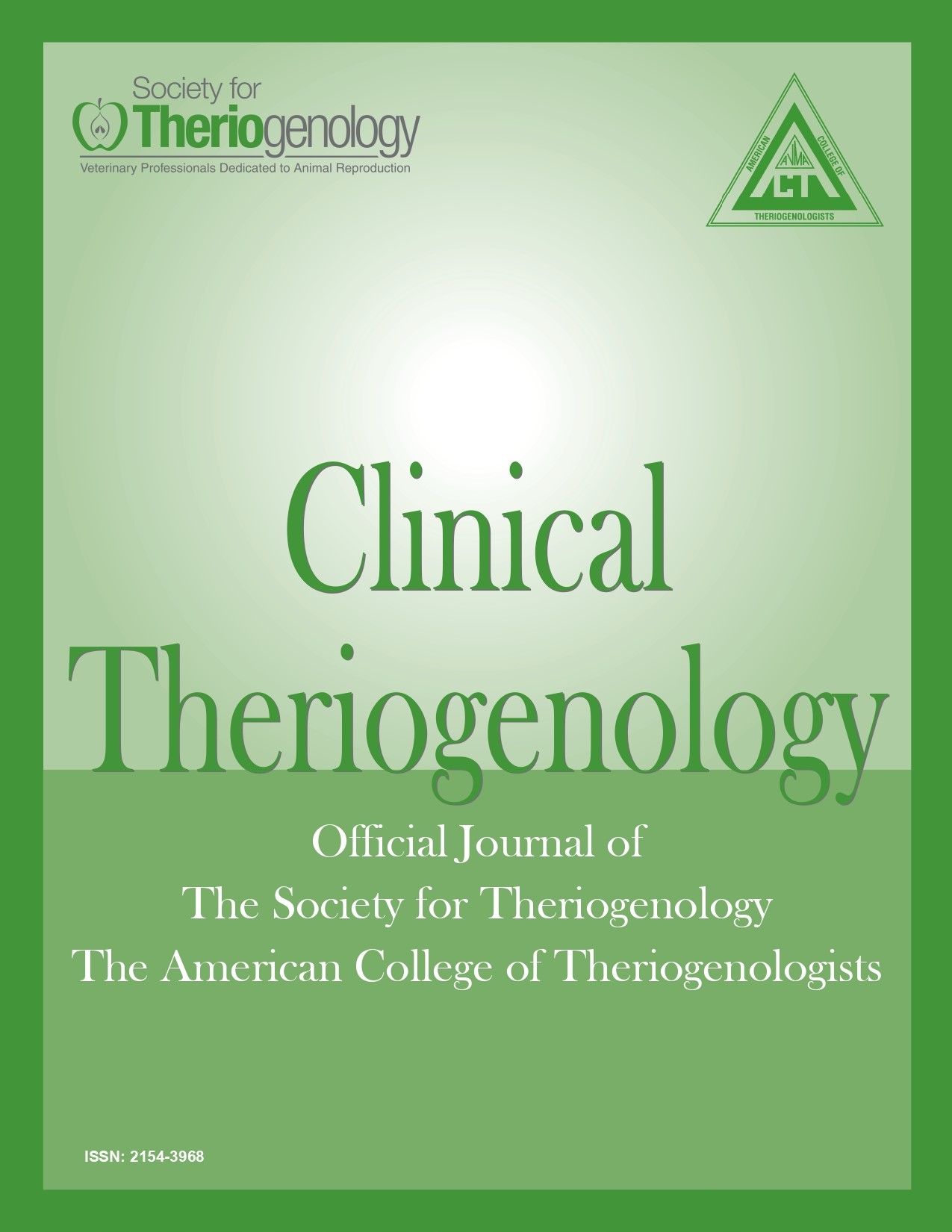Large ovary syndrome in cattle: a retrospective study
Abstract
Similar to horses, large ovary syndrome in cattle (LOS) is characterized by an excessive size and deformity of 1 or both ovaries. Most
often, a bovine practitioner refers these cases to a theriogenologist to confirm diagnosis and provide treatment. Objectives were to review
the process of diagnosis and to assess factors impacting fertility after removal of the large ovary in cows with LOS. We present 20 LOS
cases referred to the veterinary teaching hospital of the University of Montreal (CHUV). Data were collected on calving history, cyclicity,
previous treatments, results of general and reproductive examinations including transrectal palpation and ultrasonographic evaluation,
and histopathological results after ovary removal. Twelve LOS cases (60%) were identified as granulosa-theca cell tumors (GCT), 4
(20%) as ovarian abscesses (OA), and 4 (20%) as ovarian hematomas (OH). Anestrus was the most noticeable clinical sign reported by
owners. On average, the ovarian volume (height x length x width) was 1,945, 1,187, and 524.2 cm3 for GCT, OA, and OH respectively.
Concomitant conditions, such as endometritis and urovagina, had negative impacts on fertility. From these data, we concluded that
cows presented with LOS postpartum warrant a complete reproductive examination. Although 95% of the cows demonstrated a good
outcome after surgical removal of the large ovary, untreated concomitant reproductive disorders resulted in culling.
Downloads

This work is licensed under a Creative Commons Attribution-NonCommercial 4.0 International License.
Authors retain copyright of their work, with first publication rights granted to Clinical Theriogenology. Read more about copyright and licensing here.







